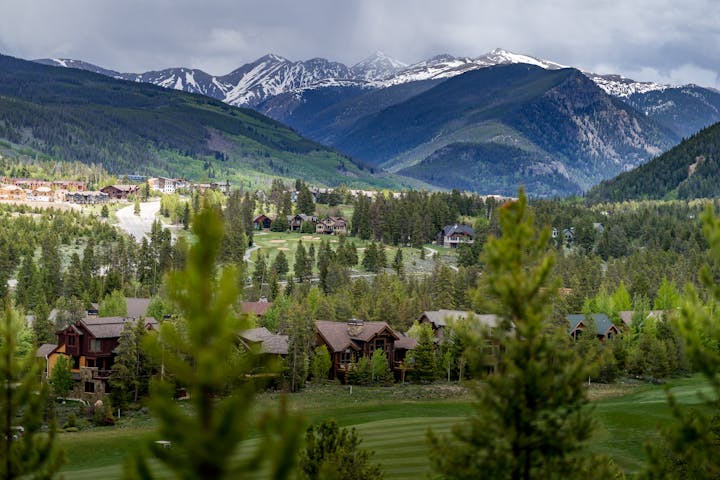El Niño Sets Sights On Colorado

January 11, 2024 | Charmaine Skoubo
As La Niña bids farewell and El Niño takes the meteorological stage, the atmospheric dance between these contrasting climate phenomena sparks curiosity about the impending weather shifts for Colorado. Will it bring more rain? More snow? The transition from one climatic player to another prompts questions about the potential impacts on Colorado’s weather, leaving us to wonder what atmospheric surprises El Niño has in store and how we can be prepared.
El Niño Explained
El Niño is a combination of weak surface winds across the tropical Pacific and warmer-than-normal water temperatures in the central and eastern tropical Pacific. With El Niño, that typically means warmer than average winters in the northern US and cooler than average winters in the southern US. The Old Farmer’s Almanac predicts that 80% of the country will experience an above average snowfall this winter.
Expectations for Colorado
According to the Climate Prediction Center, which is part of the National Oceanic and Atmospheric Administration (NOAA), Colorado is forecast to have above normal temperatures for the winter, with the southern half having an equal chance of above normal and below normal temperatures. This also means drier than normal weather for Colorado, mainly in the fall and summer.
Fall was off to a slow El Niño start of dry and warmer than average temperatures. However, the pattern shifted and is considered a “strong” El Niño year.
A strong El Niño will shift the Pacific jet stream, which helps determine temperature and precipitation patterns over the United States and alters the track of winter storms — leading to more winter storms over California and the southern United States. According to patterns of the past El Niño years in Colorado, stronger usually means average to above normal snowfall in the winter.
After the winter, scientists predict that 2024 will be even warmer than 2023, thanks to a strong El Niño. This points to a stormier spring and a drier and hotter summer for us all. Below, we discuss how to prepare for specific weather events that El Niño may bring, and what resources are available from the CSD Pool to help
Winter
With a snowier and stormier winter possible, that means more treacherous driving and hazards on the road. Check weather forecasts frequently so your district is aware and prepared.
Be sure to stock up on ice melt for everyone’s safety. Reinforce property against heavy rain and snow, have emergency supplies on hand, and make sure you know how to quickly file a claim with us.
The CSD Pool partners with First Gear Skid School, offering courses to drive in a SKIDTRUCK or SKIDCAR, which mimics driving in inclement weather conditions. Don’t forget, ice melt, snowplows, and SKIDTRUCK courses are great safety purchases that can qualify for a Safety Grant.
Be prepared for closures and weather advisories. Make sure you have a system set up for employees to be notified of any weather-related events, hazards, or closures.
We also partner with SmartNotice, a mass communication platform, helping districts notify their staff of critical events in mere seconds. This can include alerting districts about emergencies, such as weather closures and incoming storms, and even advice on how to file a claim if any damage happens.
If your district is hit by a surprise winter storm this year, it is important to know what coverages apply to you, as well as what programs and services are available as a part of your membership.
Spring and Summer
As winter comes to an end, spring and summer will bring its own El Niño challenges. El Niño typically brings warmer and drier conditions to Colorado during spring and summer. This can lead to increased temperatures and reduced precipitation, potentially impacting water resources and agricultural activities in the region.
Colorado is no stranger to droughts and with the big possibility of another drought this summer, it’s necessary to keep in mind the effects of El Niño and how we can be prepared.
Reduced precipitation can lead to lower water levels in rivers and reservoirs, affecting water supplies for both urban and agricultural areas. This water scarcity can impact crops and, of course, increase the risk of wildfires.
Wildfires pose a risk to the ecosystem, communities, and air quality. Overall, a drought can have a major impact on Colorado’s environment and economy.
For heat waves and dry weather, it’s best to plan and prepare now before the summer starts. Educating employees and training on procedures in an emergency and encouraging responsible water usage is very important.
Heat-related illness is a major issue for Colorado, sending 500 residents to the emergency room and killing 10 in 2022. Take a look at our article about what to do in a heatwave for extra ideas on staying safe.
Next Steps
Let’s face it, weather can be wild. El Niño may be like other years, or it may defy the odds. The best we can do is be prepared and expect mother nature to be unpredictable.
It is best to have a plan and make sure employees are trained to handle the unexpected. For more information on our safety programs listed in this article, visit Safety.
Our Safety Consultants are also available to help you prepare disaster contingency plans. For information on what those entail, visit Safety Consulting, email our team at safety@csdpool.org, or head on over to the next page for information on where you can find disaster funding.

